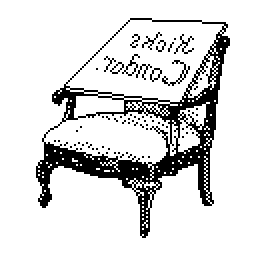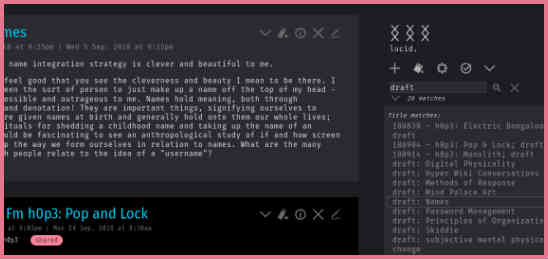
Sphygmus
Another promising introspective TiddlyWiki appears on the horizon of the network.
What excites me about sphygmus is: first, that she’s confronting this fear and we get to see what happens. (We out on the Old Web all have to confront this: that we might not find anyone here without the self-advertising infrastructure that the big networks have.) It’s uncertain why we are reading each other, why we are writing, who we are—there is a lot of uncertainty that I’m feeling, too, and I have this strange belief that someone else might have the answer. (In a way, OF COURSE SOMEONE ELSE HAS THE ANSWER—you out there are the ones who choose to ‘ignore’ or ‘respect’ or ‘dismiss’. Or to ‘jump right in’.)
But I am running a blog with comments—it’s easier to get feedback. A TiddlyWiki is genuinely on someone else’s turf. It is AT ODDS with the Indieweb. The ‘Indieweb’ is attempting to solve personal interaction with additional technology. But a TiddlyWiki like this is attempting to solve personal interaction by—well, it’s not trying to solve personal interaction. It expects you to learn its system and, in a way, the technology works against you, because it has a learning curve.
In other words, it’s all on us to understand and read each other. (The entire Twitter network is built on the idea that you can take someone’s 140 characters on its own, out of any context, as an independent statement—there is no need to read back on the history there. But with a TiddlyWiki, the system requires you to dig—it is possibly the literal opposite.)
We must bear in mind that, fundamentally, there’s no such thing as color; in fact, there’s no such thing as a face, because until the light hits it, it is nonexistent. After all, one of the first things I learned in the School of Art was that there is no such thing as a line; there’s only the light and the shade.
— Alfred Hitchcock
On the Web, we are the light to each other’s faces.
Aesthetics In The Info
Second, sphygmus’ entrance adds to our midst another person really thinking about how visual style is a non-verbal form of personality. That it can augment our discussion—maybe even be necessary!
I don’t think of it as part of my artistic practice but I think you are right to see a connection. My relationship with my digital spaces is deeply connected to what suits my visual eye - I’m on an absurdly out-dated version of Chrome simply because I hate the way the new Material Design Chrome looks […]
She has already made the innovation of posting all of her material in her own dark-gray-and-cornflower-blue CSS styling. When she posts h0p3’s replies, however, they are in his dark black style and narrow monospace font. (See the screenshot above.) This conjures him in that moment when we read!! (I address this in Things We Left in the Old Web, where one of my criticisms of RSS is that it cruelly strips our words of their coloring. Cruel!)
So: I am interested in how we can cement this. I want to style my h0p3 quotes and my sphygmus quotes similarly—can we come to an accord on how to do this so that I can give YOU control over how these things look? Perhaps we could share CSS fragments on our respective sites?
Documents Are Us
I covered this a bit in Static: the Gathering, that this HTML might actually be us, might be a model of our soul. But, let’s tilt on the topic a bit.
We are all more or less public figures, it’s only the number of spectators that varies.
— Jose Saramago, The Double
So, yeah, thirdly—what h0p3 and sphygmus are tackling is an approach for being a
fully exposed, well, let’s just say: a human. A wikified human.
There have been attempts to do this in video or blog form—to keep the
camera on a person. In this case, though, the camera feels to be focused on the
mind, the internal dialogue. (In h0p3’s case: the family meetings, the link histories, the
organizational workings—all the behind-the-scenes discussion—maybe it’s ALL
behind-the-scenes discussion. I confess that I’ve also started a personal
TiddlyWiki to store all these same kinds of materials.)
So, what is ‘oversharing’ and what is just ‘sharing’? Oh, GENEROUS ‘SHARING’—what would that be? What is ‘public’ and what is designated ‘private’? Are these pointless distinctions?
Might it be time to pause all the needless labelling of information and to just read?



